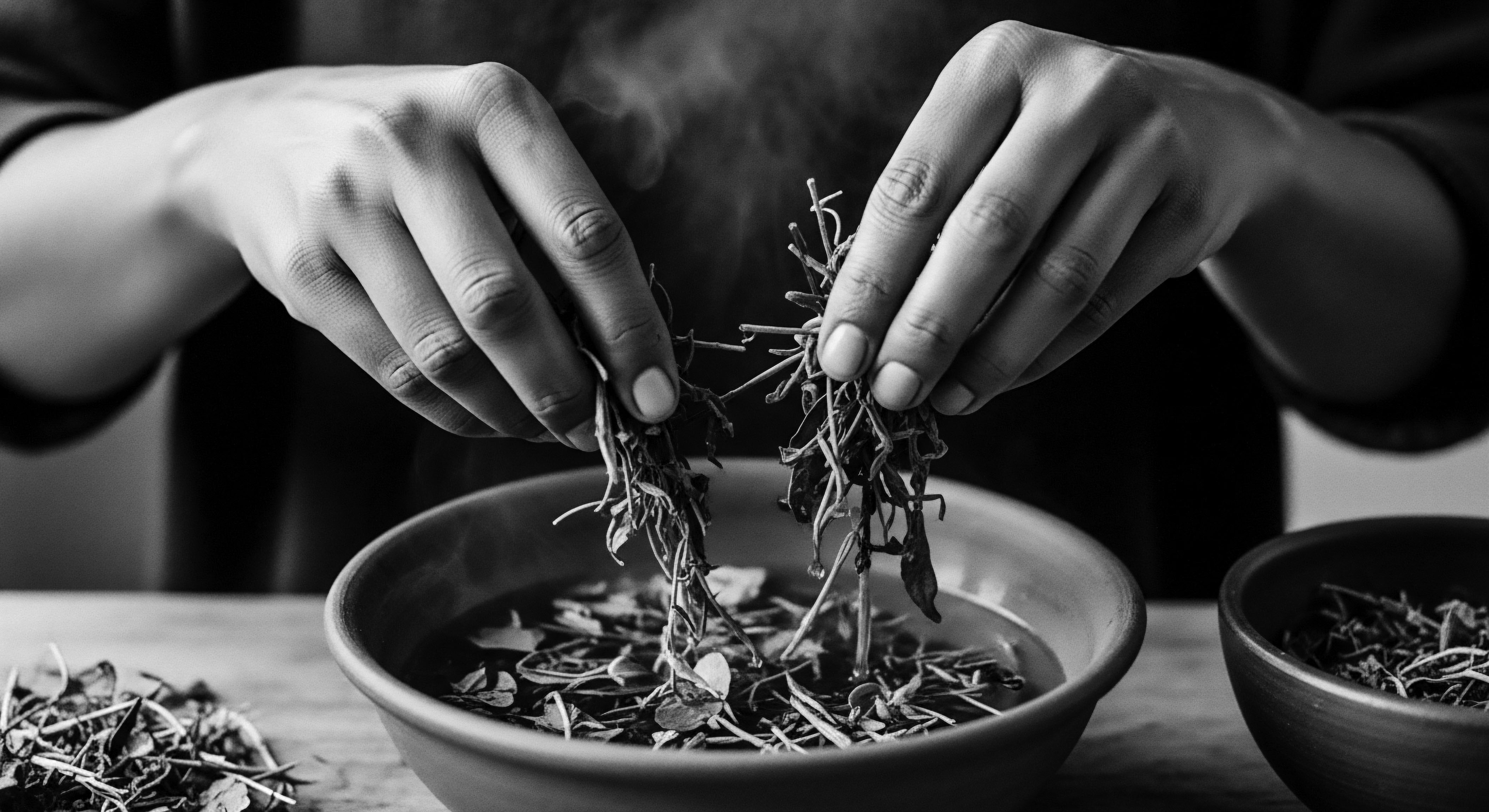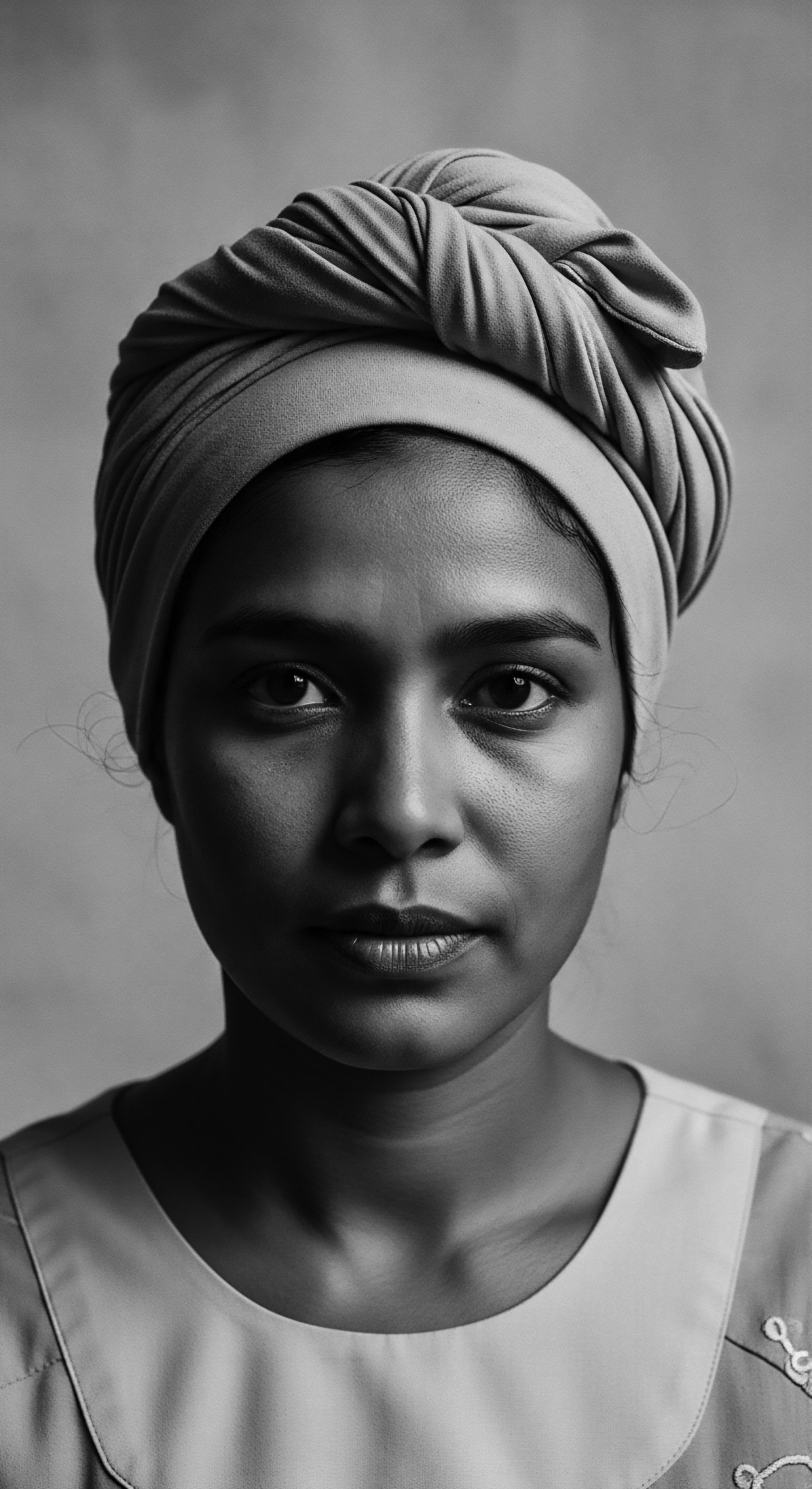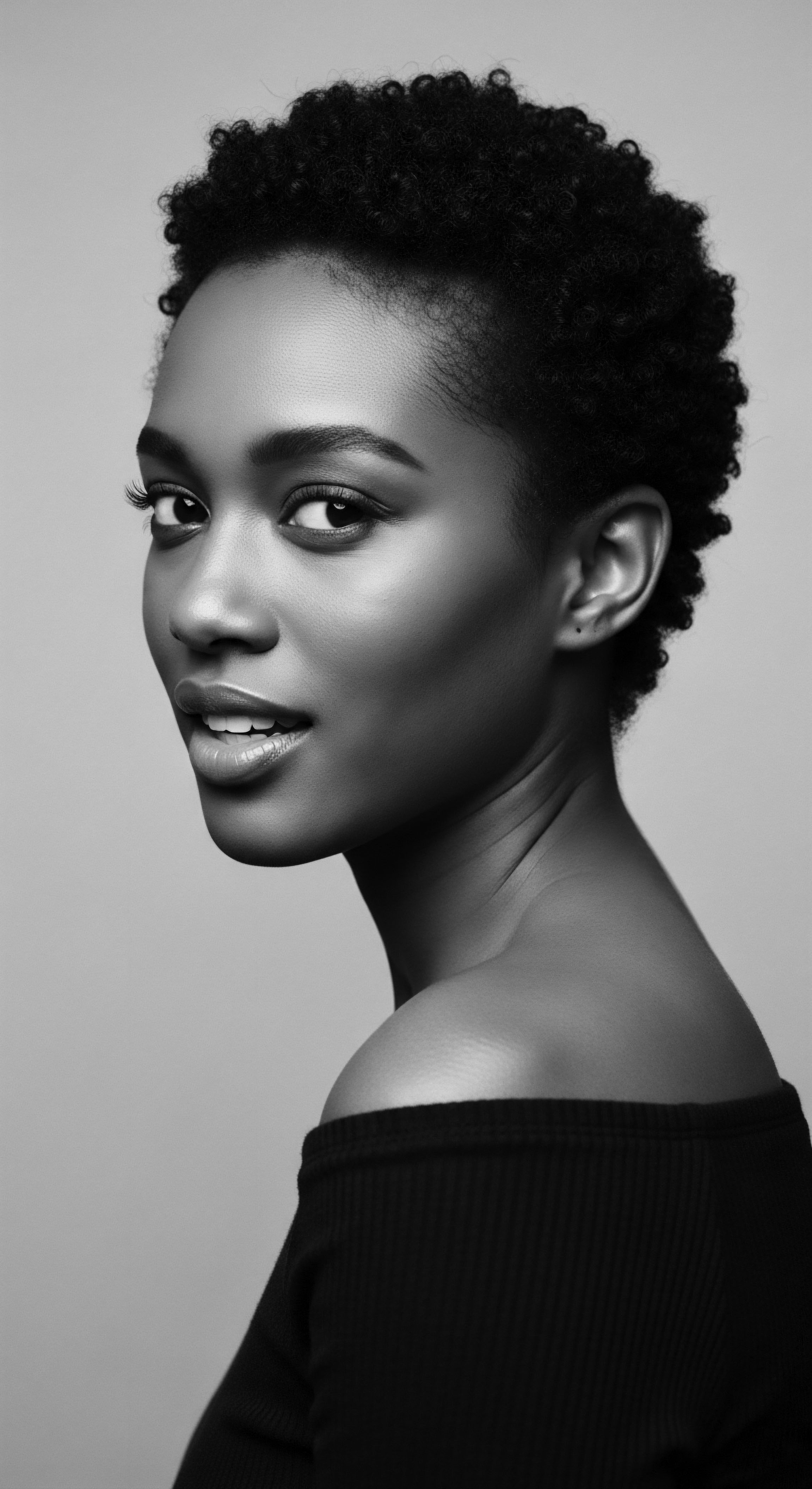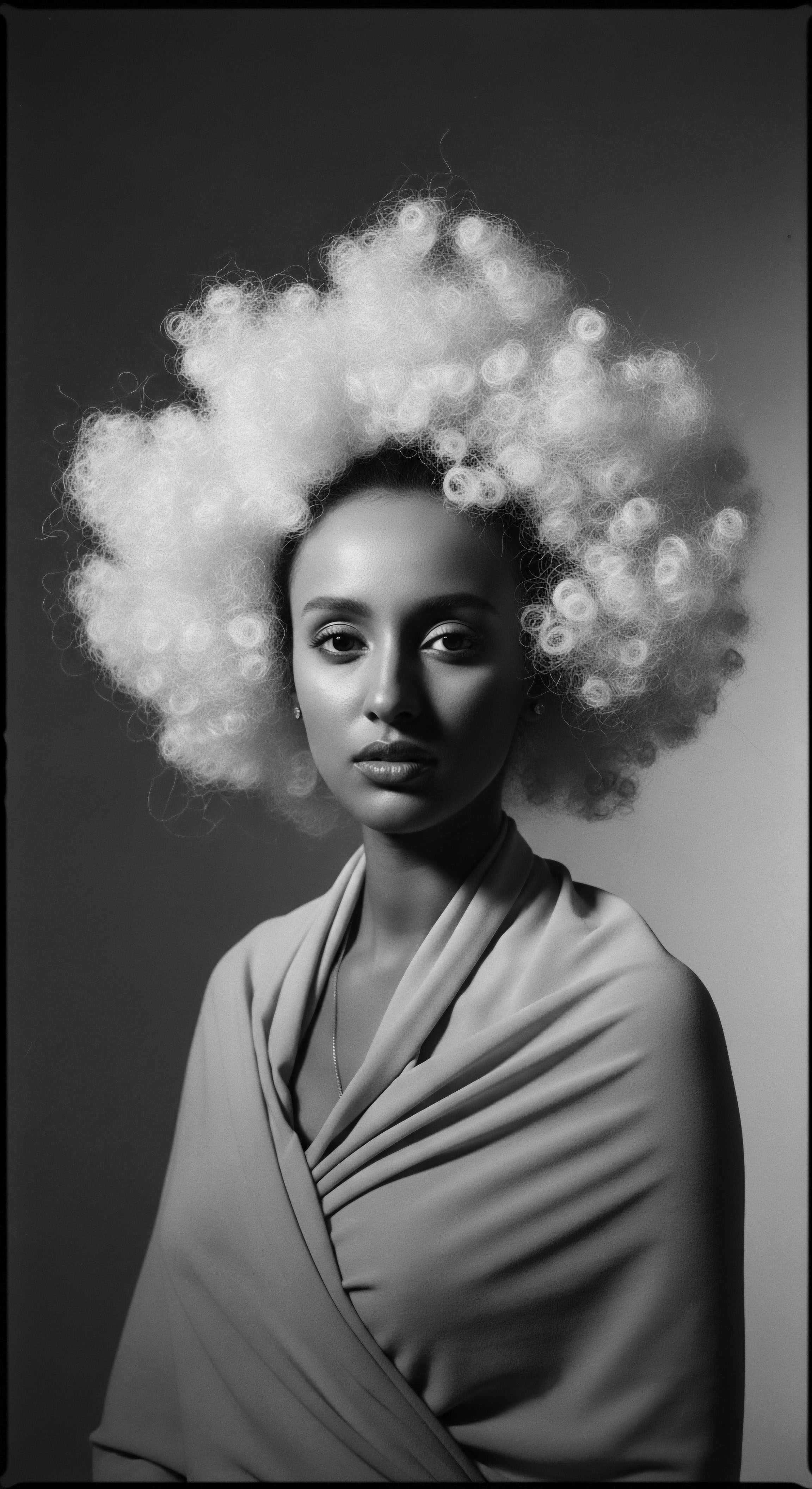
Fundamentals
The concept of Fair Trade, at its most fundamental, represents a deliberate choice for equitable exchange, a pathway towards a more just and sustainable global marketplace. It is an organized social movement and market-based approach that seeks to help producers in developing countries achieve better trading conditions. The statement of Fair Trade principles extends beyond mere commerce, encompassing a commitment to fair wages, safe working environments, environmental stewardship, and community investment. This framework stands as a counterbalance to conventional trade systems, which often prioritize profit above all else, leading to the marginalization of those at the very source of production.
When considering the profound meaning of Fair Trade, especially within the context of textured hair heritage, we begin to appreciate its elemental connection to the very earth and the hands that tend it. Many cherished ingredients central to ancestral hair care traditions—such as shea butter, coconut oil, and various botanical extracts—originate from communities whose livelihoods are deeply intertwined with their cultivation and processing. The Fair Trade movement seeks to ensure that the individuals who gather these natural resources receive a just return for their labor, honoring their dedication and ancestral knowledge. This foundational understanding sets the stage for a deeper exploration of how Fair Trade impacts the preservation of cultural practices and the well-being of communities, particularly those with rich Black and mixed-race hair legacies.
Fair Trade is a deliberate act of choosing equitable exchange, a pathway to justice for producers of cherished natural ingredients, particularly those vital to textured hair heritage.

Echoes from the Source ❉ The Genesis of Ingredients
The journey of many ingredients cherished in textured hair care often begins in the heart of ancestral lands, where generations have cultivated a deep relationship with the botanical world. Consider the shea tree, Vitellaria paradoxa, whose nuts yield the rich, emollient shea butter, a cornerstone of traditional African hair and skin regimens for millennia. The women who traditionally harvest these nuts and process them into butter possess a profound understanding of the tree, its seasons, and the intricate methods of extraction that preserve its potent properties. This knowledge, passed down through oral traditions and communal practice, represents a living archive of ethnobotanical wisdom.
Before the widespread adoption of Fair Trade principles, the value of these raw materials was often dictated by distant markets, leaving the primary producers vulnerable to price fluctuations and exploitative practices. The colonial legacy, for instance, systematically undervalued African resources and labor, forcing communities into extractive economies that benefited external powers while undermining local self-sufficiency and traditional economies. This historical context underscores the significance of Fair Trade as a reparative mechanism, aiming to rebalance these historical inequities and acknowledge the true worth of ancestral contributions.
- Shea Butter ❉ A staple in West African hair care, its origins are steeped in communal harvesting and traditional processing by women, serving both cosmetic and culinary purposes.
- Coconut Oil ❉ Valued across various diasporic communities, its extraction reflects diverse ancestral methods, from the Caribbean to parts of Africa and Asia.
- Argan Oil ❉ Hailing from Morocco, this liquid gold is produced by Berber women using age-old techniques, making it a powerful symbol of indigenous knowledge and economic self-determination.

Intermediate
Moving beyond the basic meaning, an intermediate understanding of Fair Trade unveils its layers of social, economic, and environmental responsibility, especially as these layers intertwine with the heritage of textured hair care. It is not merely about a fair price; it is about fostering long-term relationships built on trust and transparency, allowing producers to plan for their futures and invest in their communities. This deeper engagement moves beyond transactional exchanges to build genuine partnerships, recognizing the inherent dignity and wisdom of the producers.
The certification processes that underpin Fair Trade provide a framework for these principles, ensuring that products meet specific standards related to labor practices, environmental protection, and community development. For ingredients used in textured hair products, this means knowing that the shea butter in a curl cream or the argan oil in a hair mask was sourced in a manner that respects the land, the people, and the ancestral practices involved in its production. This understanding transforms a simple purchase into an act of solidarity, a conscious participation in a global movement for justice and the preservation of heritage.
Fair Trade extends beyond price, cultivating enduring partnerships that honor the land, the people, and the ancestral wisdom woven into every strand of textured hair.

The Tender Thread ❉ Sustaining Livelihoods and Cultural Rhythms
The application of Fair Trade principles creates a tender thread that connects consumers to the lives and cultural rhythms of producer communities. It recognizes that many traditional hair care ingredients are harvested and processed by women, who are often the custodians of indigenous knowledge regarding plants and their uses. In West Africa, for instance, the shea industry is overwhelmingly dominated by women, with estimates suggesting millions are involved in the collection and processing of shea nuts. These women frequently represent the economic backbone of their households and communities.
Fair Trade initiatives provide these women with access to stable markets and improved incomes, often through cooperative structures that strengthen their collective bargaining power. This economic stability allows for investments in education, healthcare, and infrastructure within their villages, contributing to the holistic well-being of the community. Moreover, it safeguards the transmission of traditional skills and knowledge to younger generations, ensuring that the ancient wisdom surrounding these ingredients and their application in hair care continues to flourish. The preservation of these practices is not simply economic; it is cultural survival, a testament to the enduring power of ancestral ways.
A study from the International Trade Centre (ITC) in 2016 revealed that the commercialization of shea products significantly enhanced the livelihoods of women producers in West Africa, leading to increased incomes and greater involvement in household decision-making. This tangible improvement in economic independence directly contributes to the capacity of these women to maintain their traditional hair care practices, which often rely on locally sourced, natural ingredients and communal preparation methods. When a cooperative thrives due to Fair Trade, it strengthens the entire community’s ability to uphold its cultural identity, where hair care is frequently a central component.

Community Well-Being and Knowledge Transmission
Fair Trade mechanisms actively support community development projects, which often extend to areas vital for the preservation of cultural practices. Investments in clean water, schools, and health clinics mean that community members, particularly women and children, have more time and resources to dedicate to traditional activities, including the intricate rituals of hair grooming. The shared experience of hair care, often a communal activity among African women, becomes more robust when communities are economically stable and culturally affirmed.
- Fair Wages ❉ Producers receive a stable, minimum price for their goods, insulating them from volatile market fluctuations and allowing for predictable income.
- Community Development Premiums ❉ An additional sum, beyond the purchase price, is paid into a communal fund for social, economic, and environmental initiatives, decided upon democratically by the producers themselves.
- Empowerment of Women ❉ Fair Trade frequently prioritizes women’s participation, providing training, leadership opportunities, and economic independence, which strengthens their role as custodians of traditional knowledge.
- Environmental Protection ❉ Standards encourage sustainable farming practices, discouraging harmful chemicals and promoting biodiversity, thus preserving the natural resources vital for future generations and traditional remedies.
| Ingredient Shea Butter |
| Ancestral Use in Hair Care Deep conditioning, scalp health, moisture retention, protective styling. |
| Fair Trade Connection Economic empowerment for West African women producers, preserving traditional processing methods. |
| Ingredient Baobab Oil |
| Ancestral Use in Hair Care Nourishment, elasticity, and scalp soothing, used for centuries across various African communities. |
| Fair Trade Connection Sustainable harvesting practices, community benefit sharing from wild-collected seeds. |
| Ingredient Moringa Oil |
| Ancestral Use in Hair Care Scalp revitalization, hair strengthening, promoting growth due to nutrient richness. |
| Fair Trade Connection Support for smallholder farmers in dry regions, diversification of income streams. |
| Ingredient These examples highlight how Fair Trade can safeguard not only the economic viability of these ingredients but also the ancestral practices and cultural wisdom associated with their use. |

Academic
The academic meaning of Fair Trade extends beyond its operational definitions, positioning it as a critical framework within discussions of post-colonial economic justice, ethnobotanical preservation, and the assertion of cultural sovereignty. It is an intricate socio-economic intervention designed to redress historical imbalances perpetuated by global trade systems, particularly those that have systematically exploited natural resources and labor in the Global South. For Roothea’s ‘living library,’ this means examining Fair Trade as a dynamic mechanism that not only mitigates ongoing economic disparities but also actively reclaims and elevates the profound ancestral wisdom embedded in textured hair care practices.
The central meaning of Fair Trade, when viewed through this academic lens, becomes an act of re-delineation of power within commodity chains. It signifies a movement towards a more equitable distribution of value, where the producers, often marginalized, gain greater agency over their products and their destinies. This is particularly salient for textured hair heritage, as many traditional ingredients—like shea butter, African black soap, and various plant-based oils—are sourced from regions historically subjected to resource extraction and colonial economic structures. The very concept of Fair Trade, in this context, is an elucidation of a reparative economic model.
Academically, Fair Trade is a dynamic socio-economic intervention, re-delineating power within global commodity chains and actively reclaiming ancestral wisdom tied to textured hair heritage.

The Unbound Helix ❉ Reclaiming Sovereignty and Knowledge Systems
The exploration of Fair Trade through the ‘Soul of a Strand’ ethos reveals its profound connection to the reclamation of sovereignty over indigenous resources and knowledge systems. The historical trajectory of global commerce has frequently seen African natural resources, from minerals to botanicals, extracted with minimal benefit returning to the communities from which they originated. This pattern of exploitation, rooted in colonial legacies, has often devalued the labor and the deep ecological understanding of indigenous peoples. Fair Trade seeks to dismantle these vestiges of unequal exchange, providing a structured pathway for producers to assert control over their raw materials and the narratives surrounding them.
Consider the shea nut, a resource deeply intertwined with the cultural and economic fabric of West African women. For generations, the collection and processing of shea nuts into butter have been an exclusive domain of women, a practice passed down through matrilineal lines, embodying both economic activity and a communal ritual. This traditional knowledge, often dismissed by industrial paradigms, represents a sophisticated understanding of botany, chemistry, and hair physiology. Fair Trade, in its essence, acknowledges this intellectual property, ensuring that the custodians of this wisdom are fairly compensated and their practices are respected, rather than merely appropriated.

Ethnobotany, Economic Justice, and Cultural Intellectual Property
The intersection of Fair Trade, ethnobotany, and post-colonial economic justice provides a rich ground for academic inquiry. Ethnobotany, the study of the relationship between people and plants, reveals the intricate systems of knowledge that have informed traditional hair care for centuries. African communities have utilized a diverse array of plants for their cosmetic and medicinal properties, with specific applications for different hair textures and scalp conditions. These practices are not random; they are the result of cumulative observation, experimentation, and intergenerational transmission.
The challenge arises when these traditional resources become valuable commodities in the global beauty market. Without Fair Trade mechanisms, the benefits often accrue to distant corporations, leaving the original cultivators in poverty. This perpetuates a form of “resource curse,” where resource-rich nations or communities remain impoverished due to external control and unequal terms of trade.
Fair Trade directly counters this by mandating transparent supply chains, ensuring producers receive a guaranteed minimum price, and often an additional social premium. This premium is then collectively invested in community projects, such as schools, healthcare facilities, or processing equipment, thereby strengthening local economies and preserving cultural continuity.
A compelling example of this economic empowerment and cultural preservation is found in the shea sector. Research from the International Trade Centre (ITC) in 2016, corroborated by later studies, highlights that women, who comprise the majority of shea butter producers in West Africa, experienced significant increases in income and greater involvement in household decision-making due to their engagement in the commercialization of shea products. This improved economic standing provides a direct pathway for these women to invest in their families’ well-being and, crucially, to continue the ancestral practice of shea processing, which is deeply interwoven with their cultural identity and hair care traditions. The act of applying shea butter to textured hair, therefore, becomes a ritual imbued with layers of economic justice and historical memory.
Furthermore, the academic lens allows us to examine Fair Trade as a mechanism for recognizing and compensating for cultural intellectual property. The specific methods of harvesting, drying, and processing shea nuts, for instance, are not merely manual labor; they are expressions of a sophisticated traditional science. When these methods are commercialized globally, Fair Trade attempts to ensure that the originators of this knowledge receive recognition and recompense. This delineation goes beyond simple economic transactions; it represents a philosophical stance on the value of ancestral heritage in a globalized world.
The ongoing dialogue within academic circles questions whether Fair Trade, in its current form, fully addresses the deep-seated structural inequalities of post-colonial economies. Some scholars suggest that while Fair Trade offers improvements, it may not fundamentally alter the dependency on primary product exports, which was a hallmark of colonial exploitation. However, the movement’s evolving emphasis on local value addition—encouraging producers to process raw materials into finished products within their own countries—represents a significant step towards greater economic autonomy and the creation of more resilient, self-determined communities. This shift could mean, for instance, that more textured hair products containing shea butter are manufactured entirely within the West African communities that produce the raw material, thereby capturing more value locally and reinforcing the connection between product and heritage.
The implications of Fair Trade for textured hair heritage are therefore multi-layered. It supports the physical cultivation of ingredients, ensures equitable compensation for the labor involved, and, perhaps most profoundly, contributes to the perpetuation of the cultural knowledge systems that have shaped Black and mixed-race hair care for generations. It transforms the act of purchasing a product from a simple transaction into a conscious affirmation of ancestral resilience and a tangible contribution to the future flourishing of these vital traditions.
This nuanced understanding acknowledges that the meaning of Fair Trade is not static. It adapts, it challenges, and it seeks to evolve in response to the complex realities of global economic structures and the persistent echoes of historical injustice. Its application in the realm of textured hair care is a powerful testament to its potential to bridge past and present, to honor heritage, and to build a more equitable future for all.
| Aspect of Trade Resource Control |
| Historical Exploitation (Colonial/Post-Colonial) External powers dictated terms, often seizing resources or imposing unfavorable trade agreements. |
| Fair Trade's Corrective Mechanism Empowers producer communities to control their resources and negotiate terms, fostering local ownership. |
| Aspect of Trade Labor Compensation |
| Historical Exploitation (Colonial/Post-Colonial) Forced labor, extremely low wages, unsafe conditions, and child labor were common. |
| Fair Trade's Corrective Mechanism Mandates fair wages, safe working conditions, and prohibits child labor, promoting dignity. |
| Aspect of Trade Value Addition |
| Historical Exploitation (Colonial/Post-Colonial) Raw materials exported cheaply; value added in Western countries, denying local economic growth. |
| Fair Trade's Corrective Mechanism Encourages local processing and manufacturing, retaining more value within producer communities. |
| Aspect of Trade Knowledge Recognition |
| Historical Exploitation (Colonial/Post-Colonial) Traditional knowledge often ignored or appropriated without recognition or compensation. |
| Fair Trade's Corrective Mechanism Recognizes and respects traditional ecological and botanical knowledge, often compensating for its application. |
| Aspect of Trade Fair Trade actively works to dismantle the legacy of exploitation, fostering self-determination and valuing the ancestral wisdom embedded in traditional resource management. |

Reflection on the Heritage of Fair Trade
The journey through the intricate layers of Fair Trade, particularly its deep connection to textured hair heritage, leaves us with a profound sense of continuity and responsibility. It is a recognition that the care we extend to our strands is not merely a personal act of self-adornment but a resonant echo of ancestral practices, a living testament to resilience, and a powerful affirmation of identity. The ‘Soul of a Strand’ ethos reminds us that every coil, every kink, every wave carries within it stories of survival, adaptation, and beauty, stories often rooted in the very botanical resources that Fair Trade seeks to protect and honor.
From the ancient communal rituals of preparing hair oils and butters to the contemporary pursuit of ethical sourcing, a continuous thread of care and connection binds us to those who have come before. Fair Trade, in this light, transcends its economic definition; it becomes a spiritual practice, a conscious alignment with principles of justice and reverence for the earth and its stewards. It urges us to consider the hands that harvest the shea nuts, the communities that cultivate the botanical gardens, and the generations who have preserved the wisdom of natural care.
Fair Trade, a spiritual practice, aligns us with justice and reverence for the earth, honoring the hands that harvest and the ancestral wisdom woven into our textured hair.
As we look to the unbound helix of the future, the ongoing significance of Fair Trade for textured hair communities remains undeniable. It is a call to conscious consumption, an invitation to seek out products that not only nourish our hair but also nourish the communities that provide their elemental components. This commitment supports economic self-determination, safeguards precious ethnobotanical knowledge, and reinforces the dignity of labor. In every ethical choice, we participate in a legacy of care that stretches across continents and centuries, ensuring that the vibrant heritage of textured hair continues to flourish, untamed and deeply rooted.

References
- Byrd, A. D. & Tharps, L. L. (2001). Hair Story ❉ Untangling the Roots of Black Hair in America. St. Martin’s Press.
- Greig, D. (2006). ‘Women’s Gold’ – shea butter from Burkina Faso ❉ connecting rural Burkinabè women to international markets through fair trade. Development in Practice, 16(5), 458-472.
- Johnson, T. & Bankhead, T. (2014). Hair It Is ❉ Examining the Experiences of Black Women with Natural Hair. Open Journal of Social Sciences, 2(10), 86-100.
- King, V. & Niabaly, D. (2013). The Politics of Black Women’s Hair. Journal of Undergraduate Research at Minnesota State University, Mankato, 13(1), Article 4.
- Oligbi, B. O. & Agara, T. (2021). The Economics of Conflicts ❉ Natural Resources and The Dynamics of Conflicts in Post-Colonial West African Sub-Region. International Journal of Economics Development Research, 2(3), 156-170.
- Oxfam International. (2017). Women’s economic empowerment in West Africa ❉ lessons learnt from the shea industry. (This refers to content cited from FAO/ITC studies, for example).
- Raynolds, L. T. (2007). Fair trade, gender and the environment in Africa. Review of African Political Economy, 34(112), 267-277.
- Sharaibi, O. J. Oluwa, O. K. Omolokun, K. T. Ogbe, A. A. & Adebayo, O. A. (2024). Cosmetic Ethnobotany Used by Tribal Women in Epe Communities of Lagos State, Nigeria. Journal of Complementary Medicine & Alternative Healthcare, 12(4), 555845.
- Sieber, R. & Herreman, F. (2000). Hair in African Art and Culture. The Museum for African Art.
- Thompson, C. (2008). Black Women and Identity ❉ What’s Hair Got to Do With It?. University of Michigan.
- UNIFEM. (2001). ‘Women’s Gold’ – shea butter from Burkina Faso. Africa Recovery, 15(4).
- Wanki, J. N. (2024). The right to development in Francophone Africa ❉ Post-colonial agreements, sovereign authority and control over natural resources. African Human Rights Law Journal, 23(2), 228-255.
